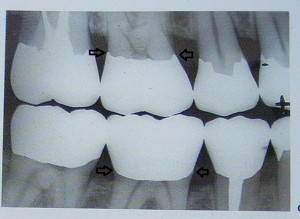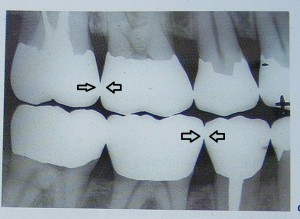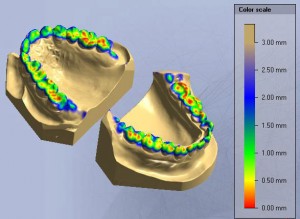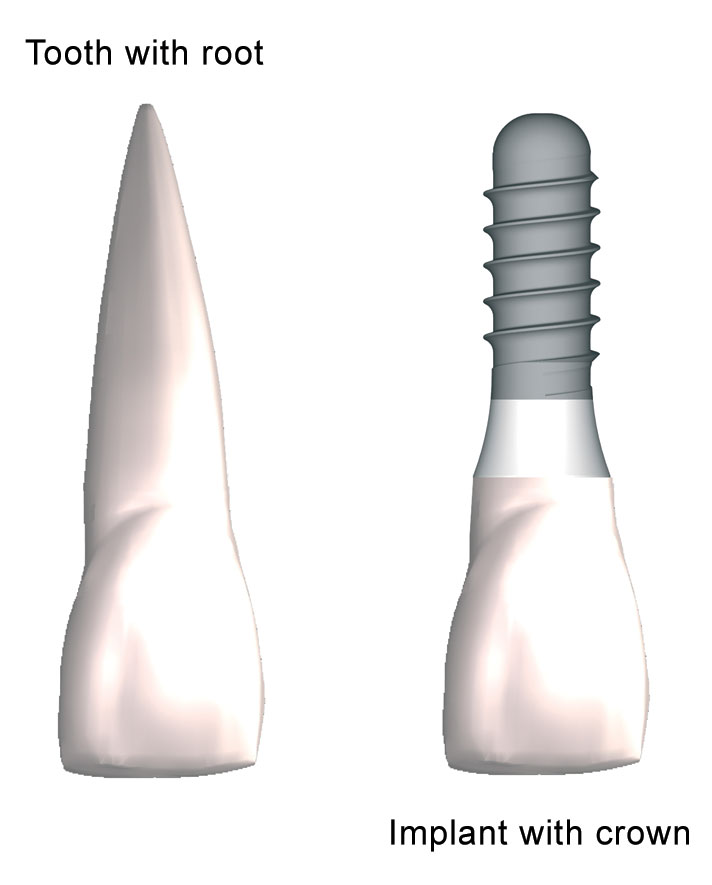Welcome To Your Pembroke Pines, Cooper City and Davie Dentist Video!
What is good Dentistry? What makes a good Dentist? If you asked a lay person, a dentist, a dental assistant, and a dental receptionsist, chances are you would get four different answers. In this blog, we do not attempt to answer that question, as our answer would go on for several pages and bring up a whole host of questions. The purpose of this blog is simply to educate the public on one particular dental procedure that can have LARGELY varying degrees of quality, and ultimately, success.
Many of us have heard of a dental crown. You may know of it as a “cap”. A crown is a “full coverage” dental “restoration” designed to restore a broken down, cracked, decayed or otherwise weakened tooth back to function and esthetics. Your tooth will be restored using porcelain and/or metal materials so that yo can continue to use it to eat and smile. This may seem simple enough, but are all crowns made alike? Is one crown done by one dentist as good as another? Is there a good crown and a bad crown? Is there a right way and a wrong way to do a crown? The answer to these questions are NO, YES, and YES! Consider the quality factors below, and make your own opinion. The discussion assumes the tooth has already been determined to need a crown. Read on, then, if you require a crown on your tooth, be sure that these quality standards are attended to by your dental office.
Photos below are for illustration purposes only.
1) ARE THE “MARGINS” OF THE CROWN SEALED?
“Margins” are where the crown meets the tooth. They go 360 degrees around the tooth and provide a “seal”, when done properly. One high quality measure your Dentist should take is to fit your crown before cementing it and take an xray with it on: the “margins” can then be visualized in a way the human eye cannot provide. If there is a gap that is quite large in a microscope, than this is just large enough for a ton of microscopical bacteria to get in that gap and give you a new cavity under your brand new crown much sooner than you’d like!

2) DOES YOUR CROWN HAVE GOOD CONTOURS?
This one’s a little more technical, but just as important. If your Dentist uses a good laboratory technician to make your crown, they will understand what a natural tooth should be shaped like, and your crown will replicate this and adapt to your mouth much better than a poorly contoured crown. A poory contoured crown will trap food, cause periodontal disease and pain, aggravate your gums, and need to be replaced sooner rather than later. Of particular note are the “contacts”, which is where the crown meets the adjacent teeth. A good lab and dentist will carefully craft this area, so food will wash away from the gums, just like your original tooth should have when it was healthy and natural. Does your Dentist use a top quality lab? Is it local and easy for the dentist to communicate with. Beware “dental corporations” that often send their crowns away to other continents, particularly China, where quality standards are lower or questionable, in exchange for a lower lab cost to the dentist.

3) HOW IS THE BITE?
“Occlusion” in Dentistry is an art and a science. It refers to the relationship of the upper teeth to the lower, and the way they meet together when touching (when you close your jaw). Many forces take place in any directions when the teeth meet together, and these forces need to be carefully considered by your Dentist and lab technician, especially when fabricating your crown. Your Dentist should have you “bite down” on paper to “check your bite”, but there is much more going on (or there shoud be!) than just feeling “comfortable” with the way your new crown “feels”. Your Dentist should absolutely care about “occlusion” and take in to consideration the way ALL your teeth meet together before and after your crown is fabricated.

Here Is A Quick Video For You About Conscious Sedation -From Your Dentist In Davie, Pembroke Pines Dentists, and Cooper City
In order for Internet Explorer Version 9 to view many websites properly, you need to click on the “compatibility button”. It looks like a torn page and is right next to where you enter the website domains or URL’s. Watch the video below for clear instructions and this should fix just about all the issues you are having with Internet Explorer.
Enjoy The Video About Kocher & Kocher Dentistry – Your Davie Dentists
Enjoy The Video About Your Davie Dentist
Have you been thinking about how great your smile would look with whiter teeth? Then let your Davie Dental Team at Kocher & Kocher set you up with a bright new smile using the Zoom! whitening technology. Watch this video to learn more and see some great results.

What are Dental Implants?
Replicating the natural function and appearance of your lost teeth can be very difficult to accomplish. Historically, dentures or bridge restorations would be used as replacements, but with limited results. Dental implants, however, are natural-looking replacements for missing teeth that also provide the same function as your natural tooth root. They have also been used to anchor these other types of restorations for greater success and patient satisfaction.
A More Natural Approach
A dental implant is a small, sturdy, titanium post that acts as the root structure would for a natural tooth. A dental implant is placed into your upper or lower jaw bone. After the bone has grown around the implant, implants can hold a crown, bridge or over-denture just like roots hold natural teeth in place. Implants are very durable and can last a lifetime. They require the same maintenance as natural teeth; this includes brushing, flossing and regular dental check-ups.
A single tooth or a full arch of teeth which have been lost due to injury or disease can be replaced with dental implants. Titanium metal is used because of its compatibility with bone and oral tissues.
Dental Implant History
Dental Implants were developed in 1952, in a laboratory in the university town of Lund, Sweden by Professor Per-Ingvar Brånemark, who had a “lucky” accident during bone grafting research. Much to his dismay, Dr. Brånemark discovered that it was impossible to recover any of the bone-anchored titanium microscopes he was using. The titanium plate had apparently bonded irreversibly to living bone tissue, an observation which contradicted all scientific theory at the time.
Dr. Brånemark went on to demonstrate that under carefully controlled conditions, titanium could be structurally integrated into living bone with a very high degree of predictability, and without long-term soft tissue inflammation or rejection. Brånemark coined the name “osseointegration,” meaning the attachment of healthy bone to a titanium implant.
Thus dental implants were born and the first application of dental osseointegration was the implantation of new titanium roots in an edentulous (toothless) patient in 1965. Dental implants have shown a 90 percent success rate and long-term studies continue to show improving success.
Reasons you may want to consider dental implants:
- To replace one or more teeth
- To provide support for a partial denture
- To increase the support and stability of full upper or lower denture
- To enhance chewing comfort
- To increase confidence while smiling, talking and eating
- To improve your overall psychological health
- To improve esthetic appearance and regain over all confidence
Dental Implants Davie
Summary
In 1952, the first dental implants were developed and since that time technology has taken leaps and bounds to give us the most modern solution for missing teeth. Dental implants restore optimum oral health, as well as confidence and hope to those who have suffered tooth loss.
Get a Free Dental Implant Davie Consultation
excerpts/info taken from dentalimplants.org
Add’l info provided by K&K Dentistry-Dental Implants Davie
Dental Implants Davie
 Taking care of your teeth is a lifelong process that should be started as early as possible. The sooner a person gets started, the healthier their lives will be. Doing this is as important as getting your yearly physical each year. The teeth in your mouth connect to almost every part of the body. Preventative care of getting a dental checkup every 6 months is a good plan to follow.
Taking care of your teeth is a lifelong process that should be started as early as possible. The sooner a person gets started, the healthier their lives will be. Doing this is as important as getting your yearly physical each year. The teeth in your mouth connect to almost every part of the body. Preventative care of getting a dental checkup every 6 months is a good plan to follow.The dental office of your Davie dentist is the best place around to receive such care. Continue reading “Your Davie Dentist Puts Your Care First at All Times”
Monday 9AM-5PMTuesday 10AM-7PMWednesday 9AM-5PMThursday 9AM-5PMFriday 9AM-5PM(every-other)Saturday 8AM-12PM (every-other)***Ask about optional evenings and Sundays by request